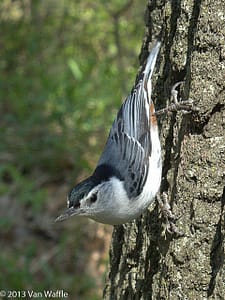
Of all wild creatures, birds particularly draw people’s affection and interest. Few can observe a Baltimore oriole’s vivid passage or hear the long-awaited spring song of a red-winged blackbird without pleasure.
While a popular hobby, birding also lets people to participate as citizen scientists. As a birder I can help understand and protect our natural environment.
Birds act as valuable indicators of ecosystem health for several reasons: they are diverse, well-adapted to practically all of Earth’s habitats, play key roles in the food chain as predators and foragers, and are visible, audible and readily identified by sight and sound.
Here are three vital volunteer programs:
Canadian Lakes Loon Survey
This month the Canadian Lakes Loon Survey released a report on three decades of data collected on the common loon. The results showed a disturbing decline linked to mercury poisoning and acid rain, and suggested the population of Canada’s iconic bird may be approaching a breaking point. Some 3,200 participants collected data on 450 lakes across the country by noting how many breeding pairs successfully raised young to six weeks of age.
For information or to volunteer, contact the program page on Bird Studies Canada’s website: http://www.bsc-eoc.org/volunteer/clls/
SwiftWatch
This provides a chance for city dwellers in Ontario and the Maritimes to get involved. The program’s subject is the chimney swift, which nests in urban chimneys but is rapidly declining for reasons poorly understood.
I participated in SwiftWatch in Guelph, Ontario, by monitoring a chimney one evening a week in summer 2011. Find more information and my account of the experience on my blog: http://www.vanwaffle.com/2012/07/19/chimney-swifts-cities-provide-essential-habitat/
Chimney swift monitoring projects are also organized through some local Audubon Societies in the United States. Here is the volunteer page for Ontario SwiftWatch: http://www.bsc-eoc.org/research/speciesatrisk/chsw/index.jsp
International Breeding Bird Survey
Perhaps one of the most rigorous volunteer research programs in the world, the International Breeding Bird Survey is coordinated jointly by the United States Geological Survey and the Canadian Wildlife Service. Candidates must be able to accurately identify all bird species in an area and intend to conduct the survey on the same site for several years.
They collect data along the same route one day each spring. People currently run 500 routes in Canada and 2,300 in the United States. More Canadian volunteers are needed, especially for those able to conduct routes in northerly regions. Information is available from Environment Canada: http://www.ec.gc.ca/reom-mbs/
Experience with the survey
I began running a route near Algonquin Provincial Park in 2000 and have done so ever since. It has become my way of celebrating Summer Solstice and my favourite day of the year. Read more on my blog: http://www.vanwaffle.com/2012/06/28/breeding-bird-survey-is-a-rich-ritual/
Familiarizing myself with the vocalizations of dozens of bird species was hard. Every year it is a fresh and satisfying challenge. In the process I contribute to science.
State of Canada’s Birds report
The Breeding Bird Survey adds much to our knowledge of how bird populations are changing over the years. It was vital to the State of Canada’s Birds report released last year: http://www.stateofcanadasbirds.org/
Volunteer with Bird Studies Canada
These are a few ways to join as a bird research volunteer. Bird Studies Canada is just one agency that organizes programs. Their volunteer pages list programs according to skill level and region: http://www.bsc-eoc.org/volunteer/
Citizen ornithology has been a rewarding experience for me and I encourage others to get involved.